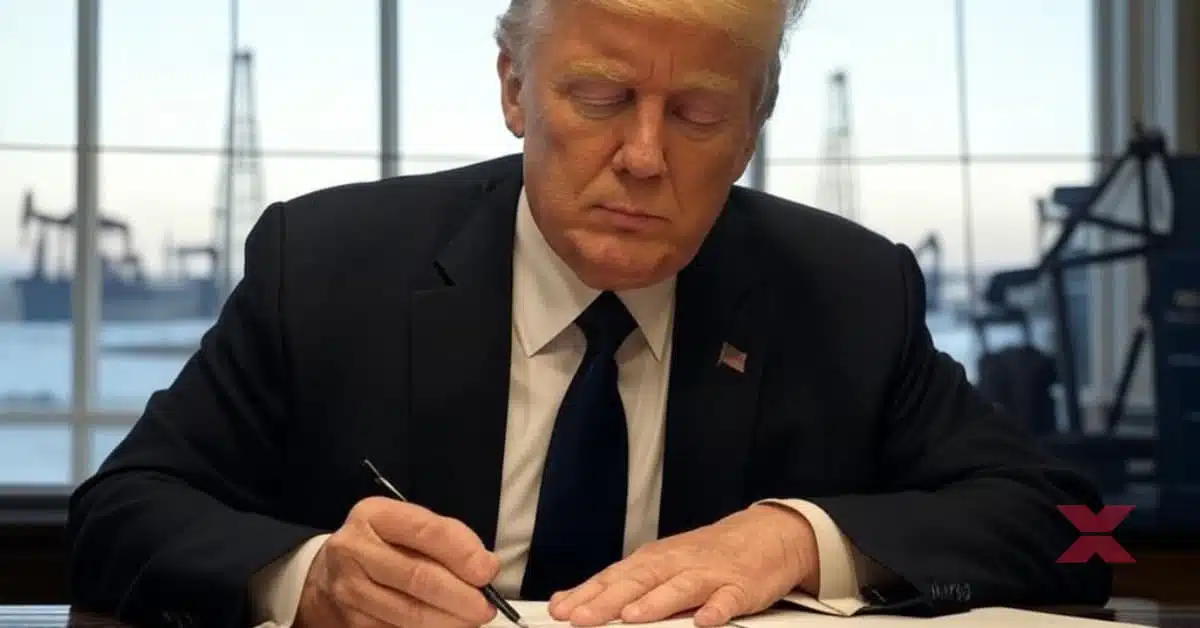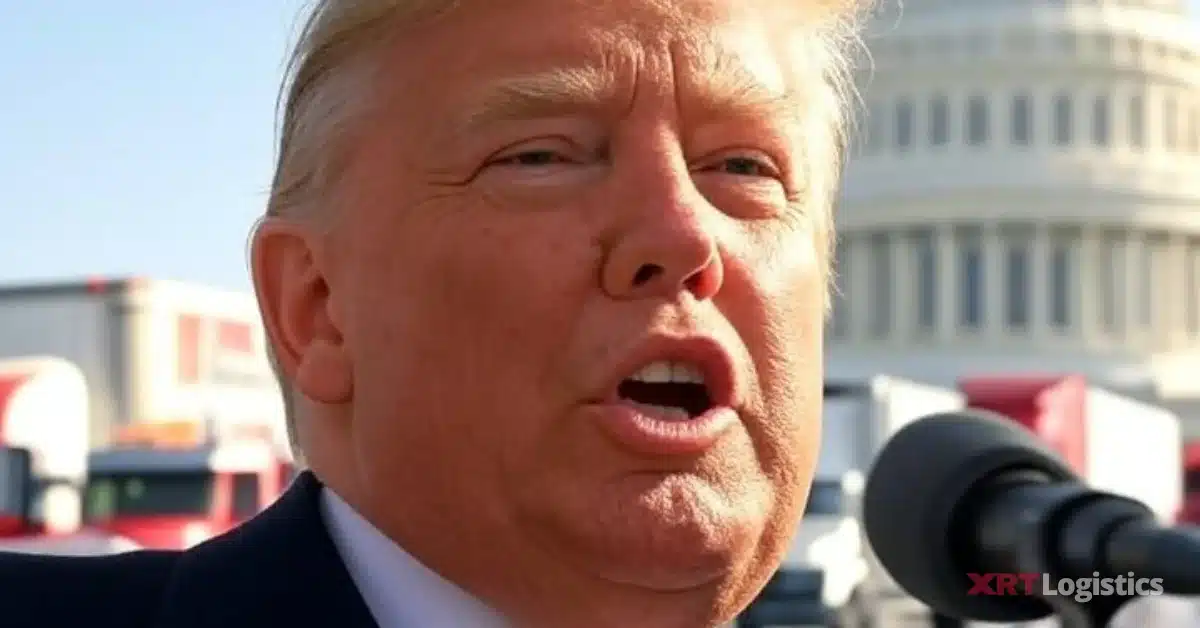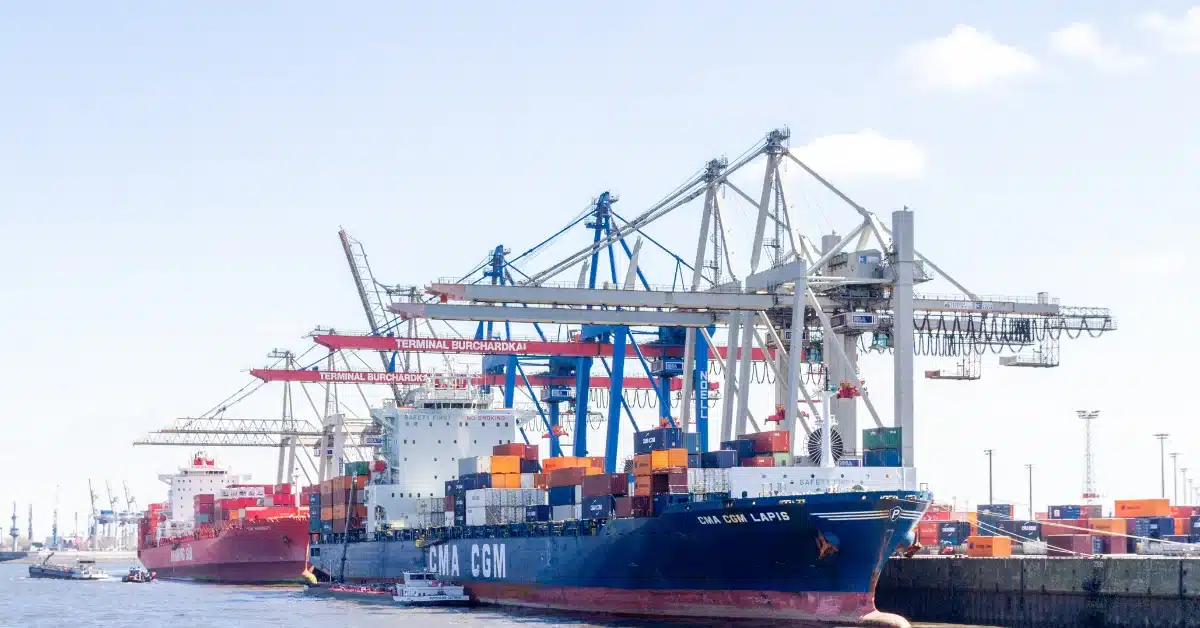Trump Mandates English Proficiency for Truck Drivers: A Move Toward Safer Roads and Unified Communication
Table of Contents
On April 29, 2025, President Donald Trump signed a pivotal executive order mandating that all commercial truck drivers in the United States demonstrate proficiency in English. This directive aims to bolster road safety and ensure effective communication between drivers and officials, addressing longstanding concerns about language barriers in the transportation sector.
Background and Rationale
The executive order reinforces an existing federal law that had not been stringently enforced in recent years. President Trump emphasized that the lack of enforcement has compromised roadway safety, stating, “America’s roadways have become less safe” due to communication issues stemming from language barriers. The administration asserts that English proficiency is crucial for drivers to understand road signage, comply with traffic regulations, and interact effectively with law enforcement and emergency personnel.
Implementation and Enforcement
The Department of Transportation (DOT) has been tasked with enforcing the English proficiency requirement. Commercial drivers will need to pass standardized English literacy tests, demonstrating their ability to read and comprehend road signs, complete necessary documentation, and communicate verbally with officials. Drivers failing to meet these standards may face penalties, including suspension of their commercial driving privileges.
Industry Response
The trucking industry has expressed a range of reactions to the executive order. The Greater Houston Trucking Association supports the emphasis on safety and professionalism but stresses the need for supportive education to avoid disadvantaging diverse drivers. The Texas Trucking Association welcomes the measure as a step toward improved road safety and uniform enforcement, citing past issues such as fraudulent driver’s licenses. However, there is concern about the potential impact on the workforce, particularly among non-native English speakers who comprise a significant portion of the industry.
Legal and Ethical Considerations
While the executive order aims to enhance safety, it has sparked debate over potential discrimination and the balance between national standards and individual rights. Advocacy groups argue that the policy may disproportionately affect immigrant communities and could be seen as a barrier to employment for qualified individuals lacking English proficiency. Legal experts are examining the order’s alignment with civil rights protections and its implications for equal employment opportunities.
Broader Policy Context
This executive order is part of a broader initiative by the Trump administration to prioritize English as the official language of the United States. In March 2025, President Trump signed an order designating English as the nation’s official language, rescinding a federal mandate that required agencies to provide language assistance to non-English speakers. The administration argues that these measures promote unity and efficiency in government operations.
Impact on Drivers and Training Programs
The new requirement necessitates adjustments in driver training programs, with an increased focus on English language instruction. Trucking companies may need to invest in language education resources to assist current and prospective drivers in meeting the proficiency standards. This shift could lead to a temporary reduction in the available workforce as drivers work to attain the necessary language skills.
Public Safety and Communication
Proponents of the executive order highlight the importance of clear communication in ensuring public safety. They argue that language proficiency enables drivers to respond appropriately to traffic signs, emergency situations, and instructions from law enforcement, thereby reducing the risk of accidents and misunderstandings. The policy is seen as a proactive step toward minimizing preventable incidents on the nation’s highways.
Challenges and Criticisms
Critics of the policy raise concerns about its potential to marginalize non-English-speaking communities and limit access to employment opportunities. They argue that the order may not account for the diverse linguistic landscape of the United States and could exacerbate existing inequalities. There is also apprehension about the implementation process and the resources required to support affected drivers.
Conclusion
President Trump’s executive order mandating English proficiency for commercial truck drivers represents a significant policy shift with far-reaching implications. While aimed at enhancing road safety and standardizing communication, the order has sparked a complex debate encompassing legal, ethical, and practical considerations. As the transportation industry adapts to these changes, ongoing dialogue among stakeholders will be essential to balance safety objectives with inclusivity and fairness.
FAQs:
- What does the executive order entail?
- It mandates the enforcement of existing English proficiency requirements for commercial truck drivers.
- Why is English proficiency important for truck drivers?
- To ensure they can read road signs, communicate with officials, and maintain safety standards.
- How will this affect current drivers?
- Drivers may need to demonstrate English proficiency; those who cannot may face restrictions.
- Are there support measures for non-English-speaking drivers?
- Industry groups have called for educational support, but specific measures have not been detailed.
- When does the order take effect?
- The Department of Transportation will implement the order, but exact timelines are pending.
- Does this apply to all commercial drivers?
- Yes, all commercial motor vehicle drivers operating in the U.S. are subject to this requirement.
- What are the consequences of non-compliance?
- Drivers failing to meet the proficiency standards may be placed out of service.
- How will proficiency be assessed?
- Through literacy tests in reading, writing, and speaking English without interpreters.
- Is this a new law?
- No, it reinforces existing federal regulations that had not been consistently enforced.
- What is the broader goal of this order?
- To enhance roadway safety and ensure effective communication between drivers and officials.





